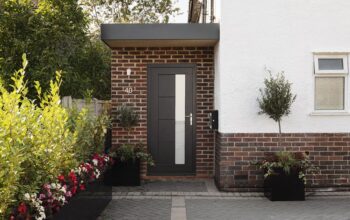Among the many interior design trends that have surged in popularity over the past five years, none have more firmly established themselves than biophilic design. The concept seems rather simple, with the term itself simply referring to the love of nature. How this concept manifests, however, is much more complicated, especially since its fundamental premise seeks to marry the exterior world and the interior living space.
While bringing nature into the home has often been noted for its value, with the serenity and beauty of the wild bringing happiness to individuals in their living spaces, it has largely been in the form of house plants and floral prints. These designs certainly do bring greenery and a wild aesthetic but they are literally and figuratively confined, failing to entirely transform a living space into one that can be truly natural.
Curvature
One of the best ways to bring nature into the home is to free a property from corners. Angular design is definitely industrial and modern, representing all but the freer and softer form of nature. As such, a tenet of biophilic design is curvature and the embracing of rounded edges.
This can manifest as arched doorways, softer edges to countertops, and even as rounded embellishments, such as cushions and frames.
Natural Materials
There cannot exist biophilic design in a landscape of artificial and synthetic materials. Plastics are a no-go for the home that truly wishes to capture nature. Instead, it is all about wood, wicker, cork, and wool, as well as a host of other natural materials. These may be more expensive than quickly manufactured alternatives but they can look far better and last much longer.
Integrated Living
For a biophilic home, residents should be immersing themselves in natural aesthetics and there is no better way to do this than in the garden. Outbuildings, such as log cabins, can offer a living space that is enjoyed outdoors, one that is, by definition, closely linked to nature.
They can be designed to face outwards, making use of a garden’s natural beauty, or can be designed to prosper alongside natural landscapes, with climbing plants on the exterior or grass and plants growing on the roof.
Luminescence
Lighting is the foundation of a home’s aesthetic. This is a rule that every interior designer knows and uses in their work. For those wanting a biophilic design, natural lighting must be embraced over artificial alternatives. Natural light has a warm and fulfilling effect, one that helps to regulate circadian rhythms and make spaces look more inviting.
Natural lighting also enhances natural designs whereas artificial lighting can undermine the quality and organic design of materials such as wood.
Sensory Styling
Biophilic design isn’t solely visual in its aesthetic, which is where many fall short. Nature inspires use through sound, touch, and scent too. This should be brought into interior design, with aromas and materials being introduced into living spaces, enhancing the impression they make, and capturing the landscapes that inspire them.




